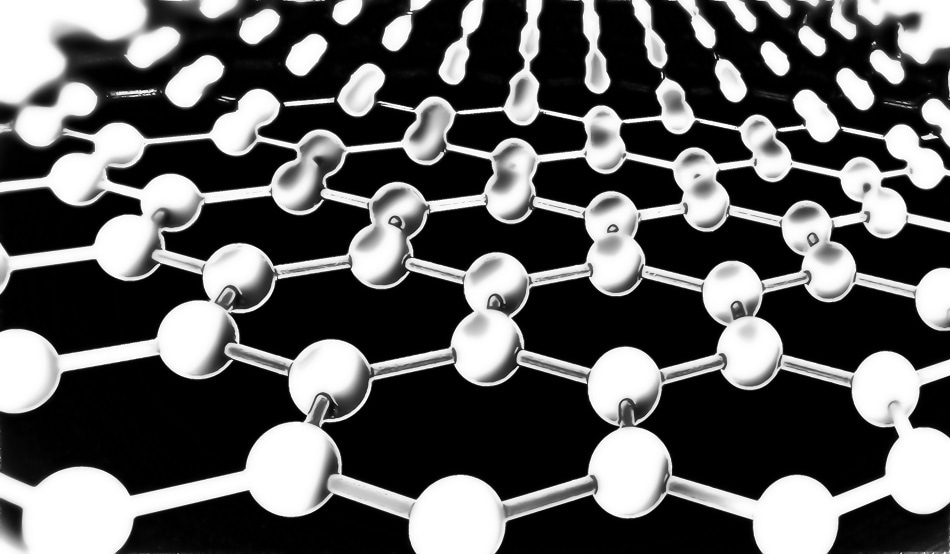 Shutterstock/GiroScience
Shutterstock/GiroScience
Optical detectors, which have fast binary photoswitching capabilities across a wide range of wavelengths, are an essential component for the realization of light-based real-time computing. Whilst the field has been steadily advancing, there is not a device that currently meets all of the required specifications.
A team of researchers from India have now created a multifunctional self-powered high-speed ultrabroadband photodetector using graphitic carbon-nitride and silicon materials for use in fast-computing approaches.
Graphitic carbon nitride is a new and emerging layered 2D material and is a cross between graphene and boron nitride. The structure of graphitic carbon nitride is made up of π-conjugated sheets that contain alternating carbon and nitrogen atoms (much like boron nitride is made up of alternating boron and nitrogen atoms). Unlike many other 2D materials, graphitic carbon nitride does possess a measurable band-gap and has been touted for use in semiconducting applications.
As well as existing as a layered 2D material, graphitic carbon nitride can be introduced into bulk structures for use in photodetector applications, and the researchers from India have done just that. To create a highly efficient photodetector, the researchers have embedded ultrathin sheets of graphitic carbon nitride into the surface of p-type silicon, to create a 2D/3D hybrid material.
The researchers created the thin graphitic carbon nitride sheets by exfoliating bulk graphitic carbon nitride using ultrasonic techniques. The materials were then characterized using a combination of ultraviolet-visible-near infra-red (UV-Vis-NIR) spectroscopy, scanning electron microscopy (SEM), atomic force microscopy (AFM) and X-ray photoelectron spectroscopy (XPS).
To fabricate the device, the researchers incorporated the graphitic carbon nitride into p-type silicon wafer using a drop cast method involving hydrogen fluoride (HF) and a solution of graphitic carbon nitride (dispersed in ethanol). The silicon substrate was then etched, and metal contacts were attached. The researchers then tested the electrical conductivity of the newly fabricated devices by taking steady-state photoconductivity (PC) measurements.
The fabricated device showed a novel binary photoswitching ability because of the heterojunction formed between the graphitic carbon nitride and the p-silicon. The device could change its current from positive to negative by responding to an OFF/ON function brought about using light illumination and a small forward bias. The constructed device can operate over an ultrabroadband region of 250 to 1650 nm and it is the first time that time binary photoswitching behaviour has been shown across 250 to 1350 nm (with a small bias) in a single device.
When the device was at zero bias, it showed a high ON/OFF ratio during illumination, as well as showcasing an ultrasensitive behaviour towards the entire operating range at low light illuminations. The device also showed a high responsivity of 12 AW-1, a high detectivity of 2.8 X 1014 Jones, an external quantum efficiency of 213%, response speeds of 0.23 ms and recovery speeds of 0.60 ms.
The performance of the device is only possible through the p-n junction formed within the hybrid material. The surface of the silicon component also becomes passivated. This helps to minimize the number of electron and hole recombination centres by minimizing the surface recombination velocity. Additionally, the energy difference between the lowest occupied molecular orbital (LUMO) of the graphitic carbon nitride and the conduction band of the p-silicon is vastly different to the energy difference between the highest occupied molecular orbital (HOMO) of the graphitic carbon nitride and the valence band of the p-silicon.
The difference in energy enables efficient charge separation and charge transfer mechanisms to take place at the interface. Any excitons that form at the interface form a hybrid charge transfer state, which can then dissociate through various mechanisms and the individual photogenerated carriers give rise to a steady photocurrent.
Overall, the photodetector has a high-performance, easy fabrication process and novel binary behaviour which could enable it to be used for light-based binary communications, optoelectronic interconnects in fast power-efficient computing, and weak signal detections. It is also thought that graphitic carbon nitride sheets could be used to enhance the performance of solar cells by incorporating similar techniques used in the creation of these photodetectors.
Disclaimer: The views expressed here are those of the author expressed in their private capacity and do not necessarily represent the views of AZoM.com Limited T/A AZoNetwork the owner and operator of this website. This disclaimer forms part of the Terms and conditions of use of this website.
Source:
“Binary Multifunctional Ultrabroadband Self-Powered g-C3N4/Si Heterojunction High-Performance Photodetector”- Prakash N., et al, Advanced Optical Materials, 2018, DOI: 10.1002/adom.201800191